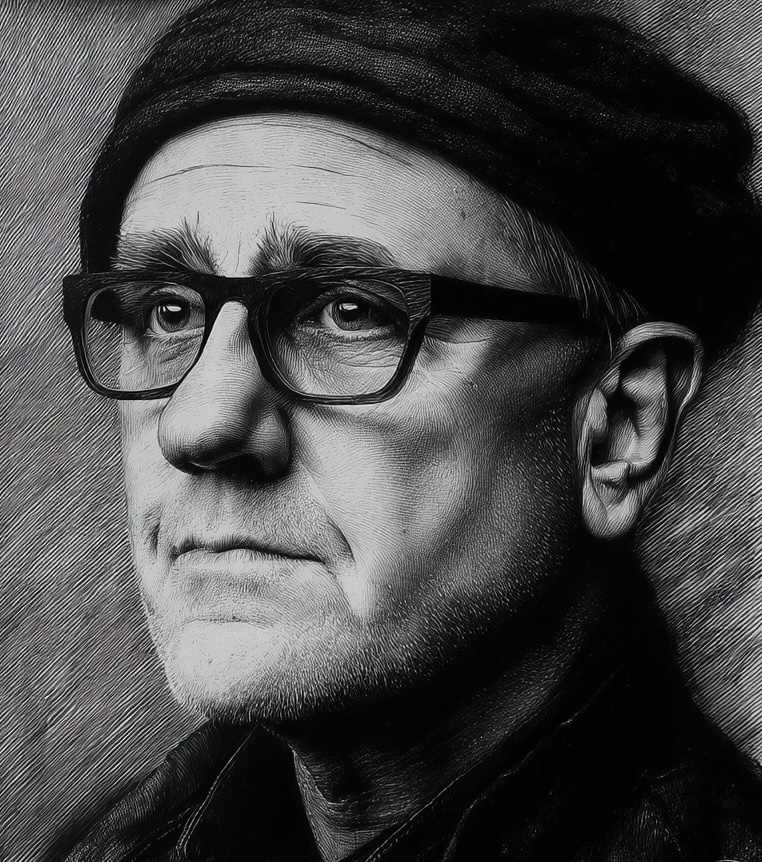
His work explores the transformative potential of modern dioramas—miniature worlds confined within boxes—through the integration of light, motion, and electronic elements. These dioramas are not static displays; they are dynamic narratives that unfold in cycles, pulses, and gestures. Using light as a storytelling medium, he crafts emotional atmospheres that shift with time, space, and perspective. Motion introduces a sense of life—characters breathe, environments change, and moments loop or unravel.
By embedding sensors, motors, and programmed sequences, he challenges the traditional stillness of diorama art, inviting viewers to engage with time-based experiences. These small-scale environments serve as stages where characters and elements interact, suggesting broader narratives of memory, isolation, humor, or wonder—all contained within the intimate frame of a box.
The box itself becomes both a vessel and a boundary: a container of worlds, yet a constraint that forces precision, intention, and imaginative depth. Within these bounds, his aim is to evoke empathy, provoke curiosity, and illuminate the vast storytelling capacity of miniature, kinetic environments.
For the LO-QUALITY show, his work envisions a post human taxonomy of crude, semi-robotic figures, The Errant, born from a civilization that advanced faster than it could reflect. Drawn with uncertainty, these beings resist the polished logic of futurism. They are artifacts of irresponsible foresight, where innovation eclipsed empathy and profit outpaced ethics.
Each figure exists in a state of becoming: half-designed, half-abandoned, suspended between invention and error. Together they form an anatomy of moral drift—a reminder that progress, when stripped of reflection, leaves only sketches of what humanity meant to be.
Josef Szuecs (pronounced SOOCH)
His work explores the transformative potential of modern dioramas—miniature worlds confined within boxes—through the integration of light, motion, and electronic elements. These dioramas are not static displays; they are dynamic narratives that unfold in cycles, pulses, and gestures. Using light as a storytelling medium, he crafts emotional atmospheres that shift with time, space, and perspective. Motion introduces a sense of life—characters breathe, environments change, and moments loop or unravel.
By embedding sensors, motors, and programmed sequences, he challenges the traditional stillness of diorama art, inviting viewers to engage with time-based experiences. These small-scale environments serve as stages where characters and elements interact, suggesting broader narratives of memory, isolation, humor, or wonder—all contained within the intimate frame of a box.
The box itself becomes both a vessel and a boundary: a container of worlds, yet a constraint that forces precision, intention, and imaginative depth. Within these bounds, his aim is to evoke empathy, provoke curiosity, and illuminate the vast storytelling capacity of miniature, kinetic environments.
For the LO-QUALITY show, his work envisions a post human taxonomy of crude, semi-robotic figures, The Errant, born from a civilization that advanced faster than it could reflect. Drawn with uncertainty, these beings resist the polished logic of futurism. They are artifacts of irresponsible foresight, where innovation eclipsed empathy and profit outpaced ethics.
Each figure exists in a state of becoming: half-designed, half-abandoned, suspended between invention and error. Together they form an anatomy of moral drift—a reminder that progress, when stripped of reflection, leaves only sketches of what humanity meant to be.